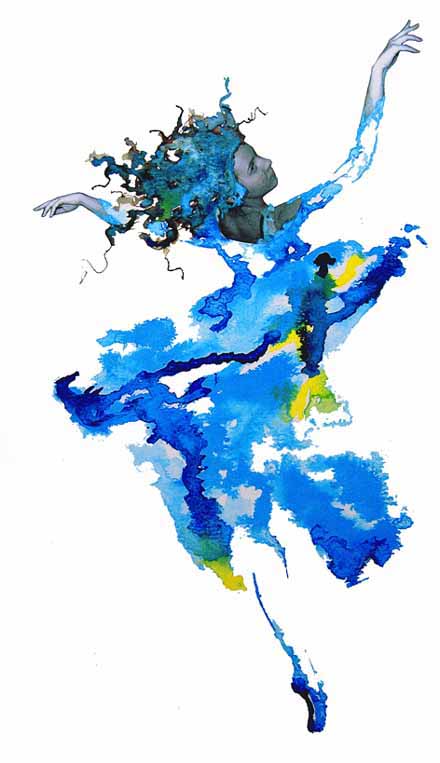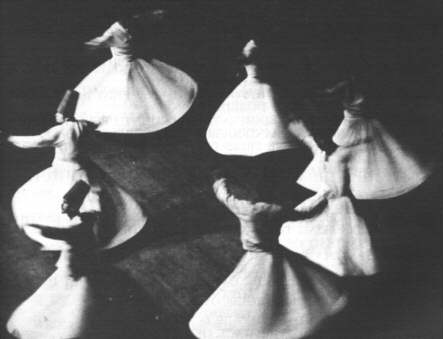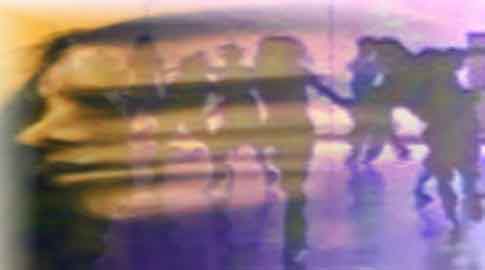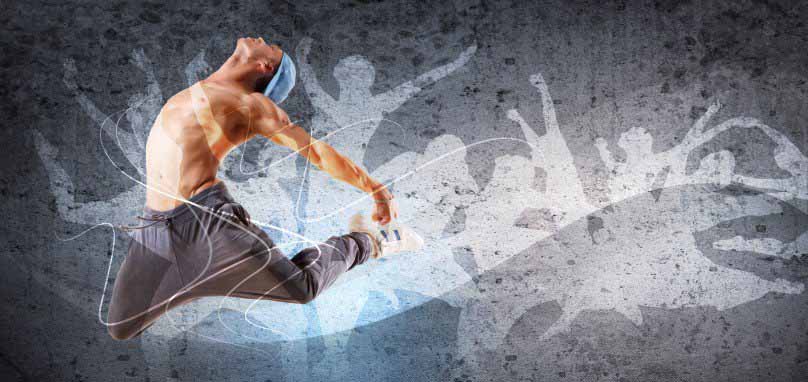



Dance is an art form that generally refers to movement of the body, usually rhythmic and to music, used as a form of expression, social interaction or presented in a spiritual or performance setting.
Dance is also used to describe methods of non-verbal communication between humans or animals (bee dance, patterns of behavior such as a mating dance), motion in inanimate objects (the leaves danced in the wind), and certain musical forms or genres.
In sports, gymnastics, figure skating and synchronized swimming are dance disciplines while martial arts kata are often compared to dances.
Definitions of what constitutes dance are dependent on social, cultural, aesthetic, artistic and moral constraints and range from functional movement, such as folk dance, to virtuoso techniques such as ballet. Choreography is the art of creating dances, done by a choreographer.
Dance can be participatory, social, or performed for an audience. It can also be ceremonial, competitive or erotic. Dance movements may be without significance in themselves, such as in ballet or European folk dance, or have a gestural vocabulary/symbolic system as in many Asian dances. Dance can embody or express ideas, emotions or tell a story. Dancing has evolved many styles through the millennia

The Whirling Dervishes trace their origin to the 13th century Ottoman Empire. The Dervishes, also known as the Mevlevi Order, are Sufis, a spiritual offshoot of Islam. In 1972, Jelaluddin Loras, Sheikh of the Mevlevi Order of America, brought the religion from Turkey to the United States.
On December 17, Whirling Dervishes across the world celebrate the birth of Jelaluddin Mevlana Rumi, a mystic poet, who founded the Mevlevi Order. Modern day Whirling Dervishes' are members of the Mevlevi Order (named for their founder Mevlana) lived in what we might call cloisters or monasteries - what to them was a Mevlevihane.

Trance is a style of electronic dance music that developed in the 1990s. Trance music is generally characterized by a tempo of between 130 and 155 BPM, short melodic synthesizer phrases, and a musical form that builds up and down throughout a track. Trance can be understood as a combination of many forms of electronic music such as ambient, techno, and house. The origin of the term is ambiguous, with some suggesting that the term is derived from the Klaus Schulze album Trancefer (1981) or the early trance act Dance 2 Trance.
In any case, the name is undoubtedly linked to the perceived ability of a drum beat to induce altered states of consciousness known as trance. The effect of some trance music has been likened to the trance-inducing music created by ancient shamanists during long periods of drumming. As this music is frequently played in nightclubs, vacation spots and inner cities, trance can be understood as a type of club music. Read more...

Study finds it is nearly impossible not to move along to music and some beats cause tiny micro-movements we don't notice Daily Mail - September 4, 2020
Dancing may not come naturally to everyone, but a new study finds that we all move to the rhythm of music, whether we want to or not. Researchers in Norway measured the micro-movements of people when music was played and found it was virtually impossible for them to stand completely still.
Humans around the world dance to the same beat Science Daily - June 29, 2015
A new study has found that songs from around the world tend to share features, including a strong rhythm, that enable coordination in social situations and encourage group bonding. Despite decades of skepticism about the presence of cross-culturally universal aspects of music, the study provides strong evidence for the existence of common features in global music.
Understanding what affects beauty through the pirouette of a dancer PhysOrg - May 13, 2011
An in-depth analysis of a ballet dancer's movements could hold the answer to how we distinguish whether someone has grace and beauty researchers suggest. Motion capture technologies make it possible, for the first time, to analyze human movements in full 3D at very high resolutions. Modeling human movements at this unprecedented level of detail can help us to understand what affects people's perceptions of grace and beauty.